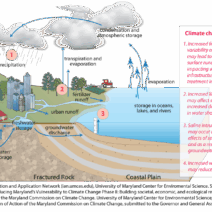Climate change has pervaded our discussions about the future of our planet, igniting urgency among scientists, policymakers, and citizens alike. But how dire is the situation, and which human activities are the most culpable in driving this global phenomenon? This inquiry forms the crux of our exploration into the top offenders contributing to climate change.
First and foremost, let’s consider the production of greenhouse gases, which serve as the principal culprit in altering Earth’s climate. The burning of fossil fuels—coal, oil, and natural gas—remains the leading source of carbon dioxide (CO2) emissions. These carbon emissions are dire, emanating primarily from transportation, electricity production, and industrial processes. It poses a playful question: What if we could power our homes, vehicles, and industries without releasing these noxious gases? This substantial challenge has spurred transformative technologies aimed at renewable sources of energy. Yet, the transition is far from straightforward.
The transportation sector warrants particular scrutiny. It generates a staggering amount of CO2, particularly through the use of personal vehicles. As populations in urban areas swell, so too does the reliance on cars for commuting. As a result, not only are greenhouse gases on the rise, but toxic air pollutants adversely affect public health, leading to respiratory and cardiovascular diseases. Urban planning and public transportation could play crucial roles in mitigating this self-inflicted pressure, yet societal inertia often impedes necessary change.
Nevertheless, it is not solely the movement of people that exacerbates climate change; the freight industry also significantly contributes to emissions. The logistics of transporting goods across vast distances relies heavily on fossil fuel consumption. Trucks, ships, and planes contribute detrimental amounts not just of CO2 but also other greenhouse gases such as methane (CH4) and nitrous oxide (N2O). With a burgeoning global market, lifestyles founded on instantaneous gratification and globalized supply chains amplify this phenomenon. Challenging the very tenets of modern consumption is an arduous task, yet it is fundamentally necessary to alter our current trajectory.
Beyond transportation, agriculture emerges as another major offender in the climate change narrative. Agricultural practices emit considerable amounts of greenhouse gases, including methane released from livestock digestion and nitrous oxide from fertilized soils. The mechanization of farming further enhances emissions as tractors and machinery guzzle fossil fuels. Additionally, deforestation for agricultural expansion diminishes trees, which serve as crucial carbon sinks. Farmland not only contributes to emissions directly but also disturbs the intricate balance of ecosystems, making climate resilience an elusive goal.
Industrial manufacturing processes also play a prominent role. The extraction and processing of raw materials into finished products result in substantial emissions. Cement, for instance, is a significant contributor to atmospheric CO2, owing to the chemical reactions involved in its production. The heavy reliance on heavy industries reflects a systemic approach that consumes natural resources at an insatiable pace, while simultaneously neglecting the imperative for sustainability. The challenge lies in revolutionizing manufacturing techniques for a cleaner, greener production model.
In addition to these primary sectors, waste management deserves critical attention. As organic waste decomposes in landfills, it emits methane, a greenhouse gas that is over 25 times more potent than CO2 over a 100-year period. The recycling and composting of materials, when done correctly, can significantly mitigate these emissions. Yet, many communities remain ill-equipped to manage waste responsibly, thus compounding the climate crisis. This presents an opportunity: could better waste management systems be the unsung heroes in the fight against climate change?
Furthermore, the consequential issue of energy consumption in residential and commercial buildings amplifies the challenge posed by climate change. Heating, cooling, and powering these structures frequently draw on fossil fuel-derived electricity sources. The lack of energy-efficient designs and the slow adoption of innovative technologies, such as solar panels, impede progress toward reducing emissions at the household level. What if community-driven initiatives fostered widespread participation in energy conservation efforts? Such a collaborative undertaking could transform building practices and enhance community engagement.
In summary, the contributors to climate change proliferate through various facets of human activity. Fossil fuel combustion within transportation and industrial sectors, unsustainable agricultural practices, waste management, and building energy consumption collectively paint a dismal picture. However, each offender presents an opportunity for proactive solutions. Narratives centered around innovation, policy, and community engagement can catalyze a paradigm shift towards sustainability. The question remains, how committed are we to confronting these challenges head-on, and what drastic measures will the global community implement to correct this course?
We stand at a precipice, poised between the current ecological crisis and the potential for a more sustainable future. Confronting our roles as the architects of climate change invites a collective reimagining of our relationship with the environment. In considering the press of human activities driving this transcendent issue, may we endeavor to be the change we wish to see and leverage our ingenuity to safeguard the planet for generations to come.

